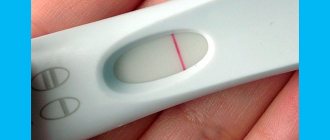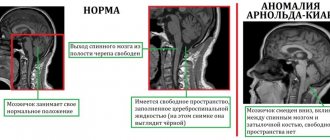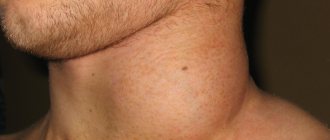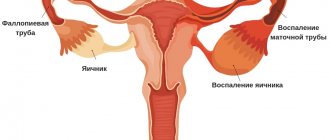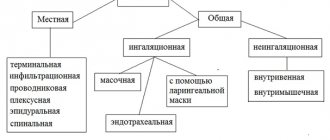Question: Is it possible to have sex after HSG?
The site provides reference information for informational purposes only.
Diagnosis and treatment of diseases must be carried out under the supervision of a specialist. All drugs have contraindications. Consultation with a specialist is required! Is it possible to have sex after hysterosalpingography?
After the hysterosalpingography procedure, it is recommended to abstain from sexual intercourse for two to three days. After these 2 - 3 days have passed after the manipulation, you can safely engage in sexual intercourse if you wish. However, you should carefully protect yourself until the next menstrual cycle.
The need to abstain from sexual intercourse for 2–3 days after hysterosalpingography is due to minimizing the risk of infection through the cervix, which has undergone dilation during the manipulation process. Within 2 to 3 days, the cervix will collapse again, that is, completely close, and then it will be possible to have sex without the risk of infection entering the uterine cavity, fallopian tubes and ovaries.
An updated and improved version of information on hysterosalpingography (HSG) in the diagnosis of tubal obstruction is available on the Infertility and Difficulty Conceiving page. Science-based guidance for women and men.
Hysteroscopy operation
Hysteroscopy is performed on the fifth to ninth day of the menstrual cycle in order to prevent bleeding, due to the presence of a thin uterine mucosa and the lack of increased blood supply. Next, the woman is placed on a regular gynecological chair, anesthetized, and the operation itself begins. Using special instruments, after treating the vagina and cervix with a disinfectant solution, the cervical canal is expanded and a hysteroscope is inserted through it into the uterine cavity. After that, for better visualization and expansion of the uterine cavity, a gas or liquid medium is used and diagnostics is started, and then, when pathological foci are identified, their removal is started. During the entire operation, the pressure of the injected gas, or the amount of liquid, as well as the patient’s vital parameters, are carefully monitored.
How accurate are HSG results?
Even when performed correctly, hysterosalpingography results can be highly inaccurate. One study that examined the ability of GHA to detect diseases of the fallopian tubes showed that the sensitivity of this examination (that is, the ability to detect a disorder if it exists) is about 65%, and the specificity (that is, to determine which disease is present out of all possible ones) is about 80%.
When it comes to checking the condition of the uterine cavity, HSG results are approximately 80% accurate. In this regard, according to some experts, instead of HSG, hysteroscopy should be performed to check the condition of the uterine cavity.
A comparison of the accuracy of HSG with other methods for determining tubal patency is presented in the article on tubal obstruction.
When can you plan a pregnancy after HSG?
The complex term hysterosalpinography (HSG) in medicine is the procedure for checking the fallopian tubes for patency. The need for it arises when a woman is suspected of infertility (if, within a year of regular unprotected sexual activity with a regular partner, she cannot become pregnant).
When a disappointing diagnosis of infertility is made, HSG will be one of the first diagnostic tests to which a woman will be referred. At the very beginning of this path, it is necessary to exclude poor patency of the fallopian tubes (due to the formation of adhesions and scars), which may cause a woman’s inability to become pregnant. In addition, doctors recommend undergoing this procedure also because it is after HSG that many women manage to conceive a baby.
Thus, HSG is both a diagnostic and, in some way, a therapeutic procedure. Because in addition to getting a real picture of the patency of the fallopian tubes, a woman also increases her chances of the long-awaited conception of a child.
Probability of pregnancy after HSG
It is quite obvious that if the patency of the fallopian tubes is not impaired, then the cause of female infertility lies in something else. And, of course, in this case, GHA will be useful only in that it will exclude possible obstruction from the “list of suspects” - you will need to look further to find out what the problem is.
However, if some obstacles still exist in the movement of the fertilized egg to the uterus, then after HSG they may disappear. The procedure itself helps to “cleanse” the fallopian tubes, improve their motility and restore their normal patency. Very often, in order to get pregnant, it is enough to do an HSG. This is confirmed by numerous reviews of women who gave birth to healthy children precisely as a result of undergoing this procedure.
A few words should be said about the likelihood of an ectopic pregnancy after HSG. It does not exceed the statistical average. In this case, the risks or chances of pregnancy generally increase. And an ectopic may occur due to changes in the tubes that are absolutely not related to hysterosalpinography. However, it is better to play it safe and visit a gynecologist as soon as the pregnancy test is positive or you feel the first signs of pregnancy to make sure that the fertilized egg is implanted correctly.
Is it possible to get pregnant after an HSG?
Practice shows that pregnancy after HSG, if the cause of infertility was precisely tubal obstruction, is possible in the same menstrual cycle that the procedure was performed. But such an outcome, oddly enough, may be undesirable. Moreover, there are often cases when doctors advise women to terminate a pregnancy that occurs immediately after an HSG.
It's all about the high doses of X-ray radiation that a woman is exposed to during the procedure. They can have an extremely negative impact on the development of the fetus, and therefore the doctor is obliged to warn his ward that within a month after the HSG (by X-ray method), she needs to use contraception in order to prevent pregnancy in the current cycle.
If an ECHO-HSG (ultrasound examination) was performed, then no risks are noted in connection with the onset of pregnancy. In general, the probability of pregnancy after HSG remains quite high for several months after the procedure.
We wish you exactly this outcome!
Especially for beremennost.net Elena Kichak
What consequences and complications can occur after HSG?
Overall, hysterosalpingography is considered a safe procedure and usually occurs without any serious complications or sequelae.
However, in very rare cases, you may develop a severe allergic reaction to the contrast material during this test. As a rule, this reaction develops in women who have had a previous severe allergy to the contrast agent (which was used during other examinations) or in women who suffer from bronchial asthma and are allergic to many chemicals.
Also very rarely, uterine perforation and bleeding are possible during HSG. In some cases, an infection may develop after HSG (see Endometritis, Inflammation of the uterine appendages).
Alternative Methods
Alternatives to GHA are:
- Laparoscopy is a surgical procedure performed under general anesthesia.
- Hysteroscopy - gives a detailed view of the inside of the uterus, but does not detect blockages in the fallopian tubes.
- Sonohysterography uses ultrasound to look at the inside of the uterus but does not see any abnormalities in the fallopian tube.
It should be remembered that hysterosalpingography is a relatively safe procedure and is often recommended, with some exceptions. If a woman has any questions about this, it is better to discuss this with her doctor in advance.
Have you had a hysterosalpingography procedure? Share your experience in the comments section.
What is the risk of the radiation I receive during an HSG?
We have already said above that hysterosalpingography uses X-ray radiation, which is a type of ionizing radiation.
However, the average dose of radiation that a woman typically receives during an HSG (0.4 to 5.5 mGy) is much less than the dose that can lead to tissue damage or mutations (the maximum safe dose is considered to be 100 mGy).
Therefore, the radiation you may receive during a hysterosalpingogram may not cause any serious harm to you or your future children.
Tubal HSG reviews, preparation, consequences
Hysterosalpingography (HSG) is a method of examining the uterine cavity and the lumen of the fallopian tubes using a contrast agent.
Depending on the device used to obtain the results, HSG can be divided into 2 types:
- • x-ray;
- • ultrasonic.
Hysterosalpingography with x-ray
The essence of this research method is that a contrast agent is injected into the uterine cavity through a thin tube.
In modern clinics, only water-soluble contrast agents are used for tubal HSG: verografin, urotrast, cardiotrast.
They have no side effects and are completely safe for the lining of the uterus, tubes and the inner surface of the abdominal cavity.
Then 3 x-rays are taken:
- • The first - after the introduction of the first 2-4 ml of contrast. It shows the shape of the uterine cavity and the condition of its mucous membrane.
- • The second - after additional injection of another 3-4 ml of the drug. Under the resulting pressure, the contrast rises through the fallopian tubes and, when they are patency, flows into the abdominal cavity.
- • Third - this image is optional, it can be prescribed if it is necessary to examine in more detail the structural features of the genital organs. Done half an hour after the start of the study.
X-ray-guided tubal HSG takes approximately 40 minutes. A total of 10-20 ml of contrast agent is administered during the study.
Ultrasound hysterosalpingography
This method is also called hydrosalpingography, since saline solution is used as a contrast fluid.
The essence of an HSG ultrasound of the fallopian tubes is that a 0.9% sodium chloride solution is injected into them, and then a transvaginal (through the vagina) ultrasound examination is performed. This method, unlike hysterosalpingography using X-rays, does not involve obtaining any type of images; the entire study is carried out exclusively under the visual supervision of a doctor.
A feature of ultrasound HSG is its additional therapeutic effect. The fluid pressure created during the examination breaks the small adhesions located inside the pipes, thereby improving their permeability. Therefore, pregnancy after tubal HSG is quite common.
In what cases is it carried out?
The main area of application of hysterosalpingography is the diagnosis and treatment of female infertility. During HSG, the following is determined:
- • patency of the fallopian tubes and their structure is the main goal of the study;
- • features of the uterine cavity, including anomalies of its structure (bicornuate, saddle-shaped uterus, presence of a septum);
- • tumors, polyps of the internal genital organs.
Preparing for the study
Preparation for tubal HSG depends on the method in which the examination will be carried out.
HSG with x-ray
It is carried out in the first half of the menstrual cycle, until the endometrium is thin enough and does not distort the picture of what is seen. The best time is the interval between 1 “clean” day after menstruation and ovulation. With a 28-day cycle, this is 6-12 days.
If a referral for HSG is written out in advance, then the patient is warned that from the moment of the onset of menstruation until the day of the examination it is necessary to abstain from sexual activity.
Blood tests ordered:
- • general;
- • for AIDS, hepatitis, syphilis.
A general urine test is performed to determine the degree of vaginal cleanliness.
In the evening before the examination day, you need to do an enema or cleanse the intestines with Fortrans.
On the day of the HSG, you should thoroughly wash the external genitalia and shave your pubic hair. The examination is usually carried out in the morning on an empty stomach. You can drink no more than 1 glass of pure water without gas 1.5 hours before the procedure.
Preparation for fallopian tube HSG immediately before the procedure involves the patient emptying her bladder and removing all metal jewelry and clothing items located in the X-ray area.
Ultrasound HSG
The main stages of preparing the patient for examination coincide with those during X-ray HSG. The main difference is that the bladder is not emptied before the examination. It should be filled tightly.
Contraindications
Fallopian tube HSG is not performed in the following cases:
- • 3 and 4 degrees of vaginal cleanliness;
- • inflammation of the uterus, appendages;
- • pregnancy, including suspected ectopic pregnancy;
- • severe forms of heart and vascular diseases;
- • allergy to contrast agents.
Research methodology
Both types of HSG have similar principles.
HSG with x-ray
Half an hour before HSG of the fallopian tubes, a woman is usually given antispasmodics (no-spa, papaverine) and sedatives, which relieve muscle spasms and excessive anxiety, which makes the procedure easier. The examination is carried out on a special table for gynecological operations.
The patient is positioned in this way, her pelvis is on the edge of the table, and her legs are bent at the knees and lie on the holders. The external genitalia are disinfected, the cervix is exposed using gynecological speculum.
Using a thin tube connected to a special large-volume syringe, contrast begins to flow into the uterus through the cervical canal.
The doctor injects 2-3 ml of fluid, and then uses a digital X-ray machine to take the first photo, which allows you to see the uterine cavity. After this, another 3-4 ml of contrast is injected.
The pressure created pushes fluid up the fallopian tubes and, if they are patent, the contrast agent flows into the abdominal cavity. At this moment a second photo is taken. If necessary, a third x-ray is taken 30 minutes from the start of the examination.
After the examination, the patient must lie down for an hour.
Ultrasound HSG
The difference between an HSG echo of the fallopian tubes is that the uterine cavity is filled not with contrast, but with a sterile saline solution in an amount of approximately 80-100 ml. Then a vaginal ultrasound is performed.
Survey results
This method allows you to accurately determine whether the fallopian tubes are passable, and if not, at what level the obstacle is located. The images are described by the doctor who performed the HSG.
Patient opinions
Most women who were referred for hysterosalpingography were unfamiliar with the test procedure and were afraid.
All reviews of fallopian tube HSG can be divided into two groups: some patients report severe pain during the procedure (60%), others (40%) report only discomfort, as during a routine gynecological examination.
It's all about the ability to adjust yourself to the examination and relax the muscles of the vagina and abdominal cavity. The calmer the patient is, the less pain she will feel. The pain sensitivity threshold also plays an important role.
Women who do not tolerate pain well are advised to discuss stronger premedication with their doctor before undergoing the examination.
In addition, contrast or saline solution entering the abdominal cavity can cause slight irritation, which is manifested by aching pain in the lower abdomen (as before menstruation). Unpleasant sensations rarely last more than 1-2 days. Contrast material may be released from the vagina, so sanitary pads should be used for several days.
Consequences and complications
Complications during tubal HSG are very rare. The most common of them are:
- • Inflammatory process in the uterus and tubes. It develops if the examination was carried out with high levels of leukocytes in the vaginal smear.
- • Allergy to contrast agents.
- • Bleeding or damage to the cervix due to violation of the examination technique.
Thus, the consequences of tubal HSG depend primarily on good preparation for the examination - clarification of all contraindications.
Source: https://love-mother.ru/gsg-matochnyh-trub-otzyvy-podgotovka-posledstviya.html
Is it true that HSG promotes conception?
Current clinical evidence suggests that hysterosalpingography may indeed improve a woman's ability to conceive, especially when an oil-based contrast agent is used for the examination.
The exact reasons for this effect of HSG on the likelihood of pregnancy are still unknown. Some experts suggest that contact of the uterine lining with an oil-based contrast agent increases its ability to support embryo development in early pregnancy.
HSG of the fallopian tubes (hysterosalpingography) is an x-ray of the pelvic organs in women to detect obstruction of the fallopian tubes and other pathologies.
Feel
Most patients develop a viscous dark brown discharge from the genital tract after HSG. Externally, they may look like blood. There is no need to be afraid of this phenomenon - it is absolutely normal. Thus, the remains of the contrast agent and particles of the endometrium (uterine mucosa) come out.
No action needs to be taken in this case. To avoid contamination of underwear, women are advised to use a sanitary pad. If a woman, a few hours or days after HSG, discovers bleeding that resembles menstruation, then she urgently needs to see a doctor.
In addition, the patient may have minor discomfort in the lower abdomen. Its presence is explained by the fact that during the procedure the uterus was irritated, as a result of which it began to contract. However, pain after HSG of the fallopian tubes should not be too severe. To eliminate discomfort in this situation, you can take No-shpa.
Sometimes there is a delay in menstruation after HSG. This is explained by the fact that the woman could be very worried before the procedure. However, she still needs to take a pregnancy test. If the delay is too long, it will be repeated every time, or if ovulation disappears after HSG, it means that there is a malfunction in the body and the woman needs to undergo a thorough medical examination. The cause of the violation in this case has nothing to do with the HSG.
The same applies to those cases when menstruation came earlier after HSG.
When a contrast agent is administered, the patient's cervix expands, so it is better to abstain from sexual intercourse for the first time after the procedure. Many patients are interested in: “After HSG, when can you sleep with your husband?” It is better to ask your doctor this question. Only he will be able to assess a specific situation and give the correct answer. As a rule, the period of abstinence should be 2-3 days. These measures are necessary to reduce the risk of infection.
Many women, even before the procedure, study on the Internet the consequences of HSG of the fallopian tubes, reviews. This, of course, can be done, but we should not forget that each woman’s body is individual and everyone tolerates the procedure differently.
A woman is recommended to contact a medical facility if, after undergoing HSG, she has:
- unusual discharge from the genital tract continues for more than 2-3 days and gradually acquires an unpleasant odor;
- a few hours or days after the procedure, bloody discharge from the genital tract appeared, similar to menstruation;
- there is severe pain in the lower abdomen;
- there is a urge to vomit, severe weakness.
You should also be wary if the temperature after HSG increases to 37.5 C or more.
Sources
- https://MyBabyPlan.ru/planirovanie/beremennost-posle-gsg.html
- https://MyZachatie.ru/planirovanie/posle-rentgena-kogda-mozhno-beremenet.html
- https://formama.online/planirovanie-beremennosti/beremennost-posle-gsg/
- https://VekZhivu.com/article/3044-beremennost-posle-gsg-matochnykh-trub-kak-skoro-mozhno-planirovat-zachatie
- https://uterus2.ru/procedures/posledstviya-gsg-matochnyh-trub-otzyvy.html
Indications for the study
HSG is prescribed if conception has not occurred for a long time, or the patient has a history of several miscarriages.
Hysterosalpingography helps identify the following disorders:
- adhesions in the tubes and uterus;
- infantilism;
- uterine fibroid;
- polyps;
- endometriotic growths;
- hypoplasia;
- uterine fibroids;
- infertility;
- tuberculosis of the reproductive organs;
- obstruction of the fallopian tubes.
Is it necessary to remove the fallopian tubes if they are blocked?
- Conservative treatment (without surgery)
is used in cases where obstruction is caused by inflammatory processes. In this case, anti-inflammatory drugs and physiotherapy are prescribed, but in the case of adhesions, such treatment is ineffective. - Surgical treatment
is surgery. Typically, surgical treatment is carried out by laparoscopy - it practically does not cause complications. But no one can give a 100% chance of curing infertility associated with obstruction of the fallopian tubes. Removal of the fallopian tubes is a last resort and is used in exceptional cases.
Contraindications
Hysterosalpingography is not suitable for everyone.
It is prohibited in the following cases:
- pregnancy and lactation;
- inflammatory processes in the pelvic organs;
- menstruation;
- diseases of the cardiovascular system;
- allergy to contrast agent;
- pathological changes in the internal genital organs;
- disorders of the liver, kidneys and thyroid gland;
- thrombophlebitis;
- viral and infectious diseases.
Contraindications for the study
In medicine, there are two groups of contraindications to performing HSG of the fallopian tubes: absolute and relative. The former act permanently, and the latter are temporary, that is, by eliminating these factors, it is possible to conduct research.
Absolute contraindications to the procedure:
- Allergy to the contrast agent used during x-rays or to iodine.
- Heart failure.
- Kidney and liver diseases.
- Pregnancy.
Relative contraindications include:
- The occurrence of an acute viral or infectious process in the body (sore throat, influenza, acute respiratory infections, boils, etc.).
- Hyperthyroidism.
- Inflammatory processes occurring in the uterus or appendages.
- Inflammation of the vagina, cervix or Bartholin glands.
- Unsatisfactory test results (increased number of leukocytes, presence of red blood cells and mucus in the urine).
Preparing for the study
HSG of the fallopian tubes is most often performed in the first two weeks after the end of menstruation, since during this period the mucous layer of the uterus is thinnest and does not block the lumen in the fallopian tubes.
It is necessary to carefully prepare for the procedure.
- After your period ends, you must use contraception to prevent pregnancy.
- A week before the x-ray, you need to undergo a gynecological examination and take all the necessary tests (blood, smear, pregnancy test) to exclude the presence of contraindications.
- For seven days before the procedure, you should not douche, or use tampons or vaginal suppositories.
- During the two days before HSG, it is advised to exclude from the diet foods that can cause gas formation (raw vegetables, fruits, grains, etc.)
- 1-2 days before the x-ray you should avoid sexual intercourse.
- On the eve of the procedure, it is advisable to do a cleansing enema.
- An X-ray of the pelvis is performed on an empty stomach and with an empty bladder.
Preparation for the procedure and procedure for its implementation
HSG of tubal patency requires careful preparation. This is due to the fact that the procedure is invasive and a dye is introduced into the body (uterus and fallopian tubes). Basic tips for preparing for the procedure include: abstaining from sexual activity 48 hours before HSG, stopping douching, using intravaginal suppositories and intimate hygiene products 7 days before the study. These drugs can negatively affect the microflora of the genital organs and distort the results of the study.
Before the procedure, a full gynecological examination, ultrasound of the pelvic organs is required, and the woman undergoes all the necessary tests to make sure there are no contraindications.
On the eve of the examination, you should perform an enema and shave your pubic hair. On the day of the examination, it is necessary to thoroughly wash the external genitalia. The procedure is carried out on an empty stomach, so you should refuse to eat, you are allowed to drink 1 glass of clean, non-carbonated water. Before HSG, you must empty your bladder.
Hysterosalpingography is performed in a hospital setting. The execution time depends on the goals of the study. Thus, to study the patency of the tubes and assess the condition of the cervix, the procedure is carried out in the second phase of the menstrual cycle; to identify endometriosis, the optimal time is 7-9 days of the cycle; If uterine fibroids are suspected, the examination can be carried out at any time when there is no menstrual flow.
For safety reasons, the procedure is carried out in the first two weeks of the uterine cycle - during this period the uterine mucosa is thin and does not block the exit from the fallopian tubes. In addition, at this time the woman is 100% not pregnant, so the study does not pose any danger. If the procedure is performed after ovulation, the patient is recommended to take a pregnancy test.
Features of the GHA
The procedure is as follows:
- The patient sits in the gynecological chair.
- The doctor inserts a speculum into the vagina and cleans the cervix and vagina with an antiseptic.
- The mirror is removed and the patient lies down.
- A catheter with a dye is inserted into the vagina, which spreads through the uterus and tubes.
- A series of x-rays are taken.
- The catheter is removed.
- After completing the procedure, you should not get up for about half an hour.
GHA - what is it
For conceiving a child, the uterine or fallopian tubes play a very important role, as they connect the ovaries to the uterus.
After maturation, the egg, ready for fertilization, leaves the ovary and enters the tube, it is here that it meets the sperm and fertilization occurs, then the embryo moves to the uterus and is fixed in it. It is to assess the patency of the tubes that HSG is performed. The study is carried out as follows: a contrast agent is injected into the uterine cavity and tubes through a catheter into the vagina; it can be: a solution of cardiotrast, trilmurast, urotrast, verografin. After this, using radiography or ultrasound, the doctor examines the internal genital organs for the presence of pathology - thanks to the contrast, adhesions and inflammatory processes become noticeable, and the doctor also records the release of contrast from the tubes into the abdominal cavity.
Important! If the patency of the tubes is impaired, then either fertilization is not possible, or the pregnancy will develop in the tubes, and this can even lead to the death of the mother.
Consequences after checking the patency of the fallopian tubes
The procedure is quite safe and painless. However, for several days after it, a woman may be bothered by mild nagging pain in the lower abdomen, discharge, and a slight increase in temperature. These phenomena are just the body's reaction to the contrast agent and should not cause concern.
If pain and fever do not go away for a long time, and there are traces of blood in the discharge, you should consult a doctor.
Perhaps this is a manifestation of rare side effects from HSG:
- inflammation of the pelvic organs (occurs with insufficient cleansing of the cervix and vagina before the procedure, as well as with a large number of leukocytes in the smear);
- allergy to the components of the X-ray contrast agent;
damage to the cervix during the examination.
Are other types of sex possible?
Often, women who have undergone hysteroscopy undergo long courses of treatment before and after it for any disease, or in the fight against infertility. And against this background, recommendations can be given for a long time to abstain from sexual activity. This is where the social question of the precariousness of family life comes into play. It happens that the spouses of patients are unable to abstain from intimacy for a long period, as a result of which the family idyll begins to shake. Based on considerations of preserving the unit of society, women ask the question: Is not quite traditional sex possible? Hysteroscopy of the uterus is a vaginal operation and does not affect other organs and systems. Therefore, oral sex after hysteroscopy is not prohibited at all. Reviews from patients who have gone through this claim that attempts at anal sex are also possible. This statement is incorrect. In the first four weeks, any stress on the pelvic organs should be excluded, since an increase in intra-abdominal pressure can be a provoking factor in the development of complications. Sports after hysteroscopy are also allowed three weeks after surgery.
